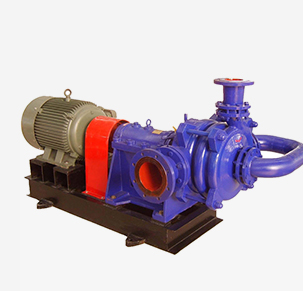English
- Afrikaans
- Albanian
- Amharic
- Arabic
- Armenian
- Azerbaijani
- Basque
- Belarusian
- Bengali
- Bosnian
- Bulgarian
- Catalan
- Cebuano
- Corsican
- Croatian
- Czech
- Danish
- Dutch
- English
- Esperanto
- Estonian
- Finnish
- French
- Frisian
- Galician
- Georgian
- German
- Greek
- Gujarati
- Haitian Creole
- hausa
- hawaiian
- Hebrew
- Hindi
- Miao
- Hungarian
- Icelandic
- igbo
- Indonesian
- irish
- Italian
- Japanese
- Javanese
- Kannada
- kazakh
- Khmer
- Rwandese
- Korean
- Kurdish
- Kyrgyz
- Lao
- Latin
- Latvian
- Lithuanian
- Luxembourgish
- Macedonian
- Malgashi
- Malay
- Malayalam
- Maltese
- Maori
- Marathi
- Mongolian
- Myanmar
- Nepali
- Norwegian
- Norwegian
- Occitan
- Pashto
- Persian
- Polish
- Portuguese
- Punjabi
- Romanian
- Russian
- Samoan
- Scottish Gaelic
- Serbian
- Sesotho
- Shona
- Sindhi
- Sinhala
- Slovak
- Slovenian
- Somali
- Spanish
- Sundanese
- Swahili
- Swedish
- Tagalog
- Tajik
- Tamil
- Tatar
- Telugu
- Thai
- Turkish
- Turkmen
- Ukrainian
- Urdu
- Uighur
- Uzbek
- Vietnamese
- Welsh
- Bantu
- Yiddish
- Yoruba
- Zulu
Telephone: +86 13120555503
Email: frank@cypump.com
Aug . 18, 2024 16:07 Back to list
Self-Priming Slurry Pumps for Efficient Fluid Handling and Reliable Performance in Various Applications
Self-Priming Slurry Pumps An Overview
Self-priming slurry pumps play a crucial role in various industrial applications, particularly in sectors such as mining, construction, wastewater treatment, and agriculture. Designed to efficiently handle abrasive and viscous fluids, these pumps can transport slurry—a mixture of liquid and solid particles—without the need for manual priming, making them an invaluable asset in many operations.
What is a self-priming slurry pump?
A self-priming slurry pump is a type of centrifugal pump that can draw liquid from a lower level and create the necessary suction to fill the pump casing with fluid, allowing for continuous operation. Unlike standard centrifugal pumps, which require the pump casing to be filled with liquid before operation, self-priming pumps can evacuate air from the suction line and replace it with the fluid, enabling them to start in a dry state.
Construction and functionality
Self-priming slurry pumps are built with robust materials, designed to withstand the wear and tear associated with handling abrasive materials. Common materials include cast iron, high-chrome alloys, and elastomers, which provide durability and extend the life of the pump.
The operation of a self-priming pump involves a unique mechanism that includes an impeller, a volute, and a separate priming chamber. Upon starting, the impeller spins, creating centrifugal force that drives the liquid from the priming chamber into the pump casing. This action generates a vacuum that pulls the slurry into the pump through the suction line. As the pump continues to run, it keeps the casing filled and maintains the flow of slurry.
Advantages of self-priming slurry pumps
self priming slurry pumps

1. Ease of use The primary advantage of self-priming slurry pumps is their ease of operation. Users do not need to manually prime the pump before starting, which saves time and labor.
2. Efficiency These pumps are designed to handle high concentrations of solids and can efficiently transport thick slurries, ensuring minimal downtime in operations.
3. Versatility Self-priming slurry pumps are suitable for various media, including wastewater, sludges, and mineral slurries. Their adaptability makes them ideal for different industries, from mining to sewage treatment.
4. Cost-effective Although the initial investment might be higher than conventional pumps, the long-term savings in maintenance, operation, and labor make self-priming slurry pumps a cost-effective solution.
Applications
Self-priming slurry pumps find applications across diverse sectors. In the mining industry, they transport slurry created from crushed ore mixed with water. In wastewater management, they handle solids-laden sewage and sludge. Agricultural applications include irrigation systems where water mixed with fertilizers or sediments needs to be pumped efficiently.
Conclusion
In summary, self-priming slurry pumps are essential tools for industries that require the transportation of abrasive and viscous materials. Their ability to operate without manual priming, combined with their efficiency and robustness, makes them a preferred choice in various applications. As technology continues to evolve, it is likely that the design and functionality of self-priming slurry pumps will improve, further enhancing their performance and versatility. Investing in a reliable self-priming slurry pump is a step towards ensuring efficient operations and longevity in fluid handling processes.
-
Custom Drilling Mud and Slurry Pump Supplier - High Efficiency, Tailored Solutions
NewsJun.10,2025
-
Supply Vertical Submersible Sewage Pump High-Efficiency WQ/QW Pumps Supplier
NewsJun.10,2025
-
Premium Sewage Ejection System & Pumps Efficient Waste Removal
NewsJun.09,2025
-
Premium Wholesale Slurry Pump Impellers Durable & Efficient Slurry Handling
NewsJun.09,2025
-
Top Sewage Pump Companies Durable Industrial Solutions for Efficiency
NewsJun.09,2025
-
Heavy Duty Slurry Pumps - OEM High Performance & Bulk Wholesale
NewsJun.09,2025










